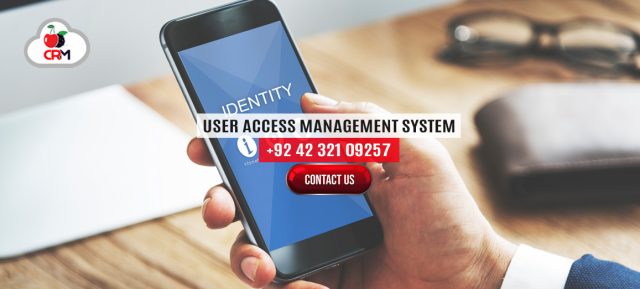in the computer Age, where data is an essential part of business operations, ensuring foolproof security while facilitating seamless access for authorized personnel is a critical challenge. User Access Management (UAM) solutions have appeared as a fundamental component of modern cybersecurity strategies, by providing organizations with the tools to manage user identities, permissions, and authentication extensively and efficiently. The multifaceted type of User Access Management involves exploring its significance, key features, benefits, and the evolving landscape of cybersecurity.
Understanding User Access Management Solutions:
User Access Management is a calculated approach to controlling and regulating user access to digital resources within an organization. This encircles a range of activities, including user authentication, authorization, and monitoring. UAM solutions play an important role in maintaining the delicate balance between enabling employees to perform their tasks effectively. Besides safeguarding sensitive data from unauthorized access or malicious activities.
Key Features of User Access Management Solutions:
Identity Verification and Authentication:
It represents the foundation of User Access Management (UAM) solutions, playing a significant role in fortifying organizational cybersecurity. These solutions go beyond traditional username and password combinations, employing sophisticated identity confirmation methods. Through the execution of multi-factor authentication (MFA), UAM solutions add a layer of security. Moreover, requiring users to provide multiple forms of identification, which includes passwords, biometrics, or one-time passcodes. This comprehensive attitude significantly supports protection against unauthorized access, even in the event of compromised login documentation. Incorporating advanced biometric technologies like fingerprint or facial recognition alongside traditional authentication methods ensures a sophisticated and adaptive defense mechanism. This not only enhances security but also aligns with the evolving nature of cyber threats, where simple passwords alone may fall short. The emphasis on robust identity verification and multi-factor authentication safeguards sensitive organizational data and instills a sense of confidence in users.
Role-Based Access Control (RBAC):
Role-Based Access Control is a basic feature of UAM, allowing organizations to define user roles and assign permissions based on job responsibilities. This not only rationalizes access management but also confirms that users have the necessary permissions to perform their tasks without unnecessary access to sensitive information.
Single Sign-On (SSO):
Strengthening user experience, Single Sign-On enables employees to access multiple applications with a single set of login credentials. This not only decreases the burden of password management but also improves security by executing stronger authentication mechanisms.
Real-Time Monitoring and Reporting:
These solutions provide real-time monitoring of user activities, enabling organizations to detect and respond to suspicious behavior speedily. Detailed reporting functionalities offer awareness of user access patterns, helping in compliance adherence and security audits.
Integration Capabilities:
Without blemish integration with other security tools, such as Identity and Access Management (IAM), Security Information and Event Management (SIEM), and endpoint protection systems, is crucial for a comprehensive cybersecurity strategy. User Access Management solutions ensure interoperability and collaboration among various security components.
Benefits of User Access Management Solutions:
Enhanced Security:
It is a predominant feature within the type of User Access Management (UAM) solutions, representing a multifarious strategy to fortify organizational cybersecurity. This advanced approach goes beyond traditional username and password systems, incorporating factors such as biometrics, smart cards, or one-time passcodes. By transforming the elements required for authentication, UAM solutions create a robust shield against various cyber threats, including password-related vulnerabilities and phishing attacks. This not only increases the overall security posture of the organization but also adjusts to best practices in the rapidly evolving landscape of cybersecurity. As the threat landscape continues to advance, UAM solutions stand as a proactive defense mechanism, offering a comprehensive and adaptable strategy to safeguard sensitive information and uphold the integrity of organizational security frameworks.
Compliance Adherence:
In the administrative landscape, compliance with data protection laws and industry regulations is non-negotiable. UAM solutions facilitate compliance adherence by confirming that access controls and user permissions align with regulatory requirements.
Improved Productivity:
Organizing user access processes with UAM solutions reduces the chances of access-related issues. This, in turn, enhances employee productivity as users can now focus on their tasks without encountering unnecessary barriers or delays.
Cost Efficiency:
The automation of user access processes minimizes the workload on IT teams. Moreover, it will reduce manual errors and operational costs associated with managing access permissions. This efficiency gain contributes to overall cost-effectiveness.
Adaptability to Organizational Growth:
UAM solutions are designed to scale alongside organizational growth. Whether a company is expanding its workforce, including new technologies, or diversifying its operations, the flexibility to accommodate evolving access management needs will be protected.
The Evolving Landscape:
The cybersecurity perspective is in a constant state of fluctuation, with cyber threats becoming more advanced and diverse. In reciprocation to this, User Access Management solutions continue to progress. Advancements in artificial intelligence and machine learning are being integrated into UAM systems. It will enhance threat detection capabilities and adapt to emerging security challenges. Moreover, the integration of digital ledger technology is gaining traction, offering decentralized and tamper-resistant identity verification.
Conclusion:
User Access Management solutions stand as the backbone of modern cybersecurity strategies, enabling organizations to strike a balance between user convenience and strong security. As the digital landscape continues to evolve, the role of UAM solutions becomes increasingly crucial in safeguarding sensitive information. While ensuring compliance, and empowering organizations to navigate the complexities of user access in the digital age. As businesses recognize the elucidative importance of secure and efficient access management, the adoption of UAM solutions has become poised. Not just a cybersecurity necessity but a strategic imperative for organizations aiming to thrive in an ever-connected world. Consultation with Cherry Berry CRM is a must for the success of your business.

